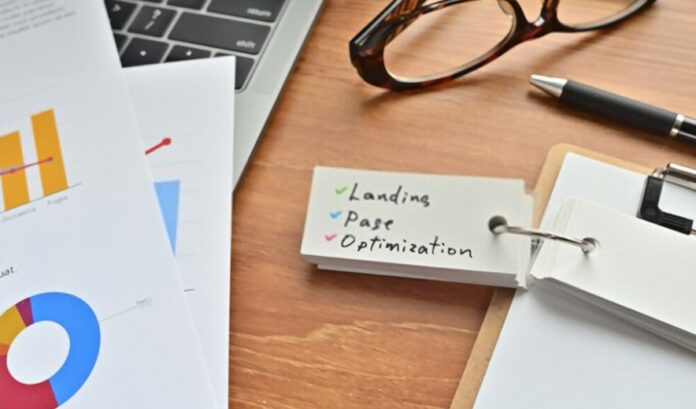The landing page is the first page your potential customers’ visit before moving ahead in their customer journey. It is necessary to track your landing page’s metrics to find the gaps that might bottleneck conversions. To understand if your landing page is optimized to the best possible state, you need to regularly monitor your landing page performance metrics. Landing pages are built to convert visitors into buyers, and thus you need to keep your messages strong, valuable, visually streamlined, and effective.
With technological advancement, customer expectations are also increasing in terms of experience. Therefore, to achieve your landing page objective, you need to monitor its impact and continuously do it. Optimizing and targeting your landing pages based on the performance metrics increase the conversion rate by up to 300 percent. Remember that your landing page gets an average time of only a few seconds to create the desired impression on the target audience. Thus, it should be optimized to make the best use of those eight seconds and increase the conversion rate. Here are a few landing page performance metrics that you should measure to make the most of your landing page.
Bounce Rate
Bounce rate is the rate of users who leave after viewing a single page without further engagement. You can measure it by calculating the number of ‘single-page sessions’ divided by the number of total sessions. A high bounce rate is the sign of an ineffective landing page where visitors cannot find what they were looking for, or your page is not interesting enough to push the visitor to take further action. Simultaneously, a high bounce rate can also be an effect of misaligned campaign promotion. Try to highlight your offers and create a sense of urgency to make the readers click on your CTAs. Also, make sure that you draft short, catchy, informative, and relevant headlines so that you can attract the readers’ attention.
Landing Page Views
Another important measurement of the landing page that you need to keep track of is how many times a visitor has viewed your landing page. Moreover, you also need to know when they visited your landing page and what activities have been done. Measuring landing page views enables you to target the customers who have shown higher interest by personalizing your messages based on their activities. Moreover, tracking landing page views helps you determine the ideal time to send promotional messages to a customer by analyzing when customers visit your page.
Average Time on Page
By recording the time spent on the landing page by a visitor, you can analyze how impactful your landing page is. Ideally, a visitor should spend an average of 15 minutes on a landing page. If the average time spent on the landing page is higher or lower than the intended time, it’s time to make some changes to the landing page content. Remember, the content should not be too long as the users might lose interest. It should not be too short either, as the landing page might not be informative enough.
Conversion Rate
You need to analyze the conversion rate if your landing page aims to convert the users to a specific customer to the next life cycle/buying stage. Since not every visit on your landing page ends up in a conversion, you need to calculate the landing page conversion rate based on the number of unique visitors. This helps optimize and report the ROI.
Form Abandonment Rate
Often customers start filling out your form on the landing page but do not submit it. This is known as form abandonment, and you need to track this rate. If your landing page aims to gather customer information and contact details, a higher form abandonment rate can affect your entire digital marketing strategy. Often the reason behind form abandonment is a lengthy form. You can run your forms through an A/B test to understand the impact of a form.
It is important to keep tracking your landing page performance metrics to get a clearer idea of your landing page’s ability to bring business. This will help you to find the gaps in your landing page and fix them on time to generate higher ROI.




